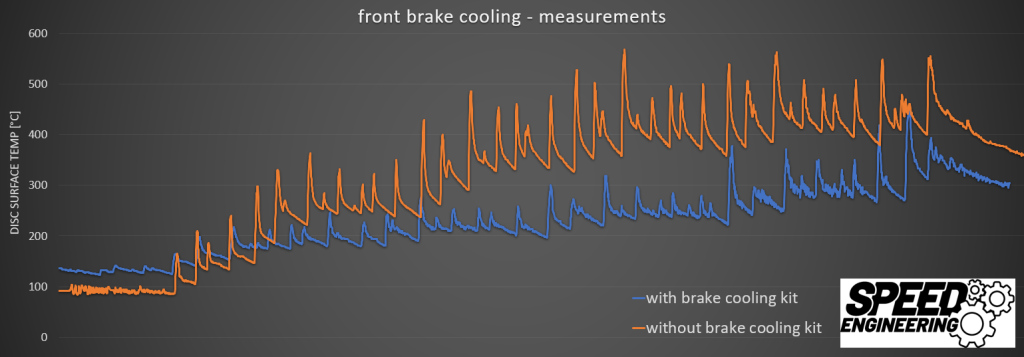Does brake cooling really add value?
A fast car, a relatively small standard brake system & a powerful brake pad on the Bilster Berg! – Is that going well?
A look at the standard brake disks of our GR86 shows: Despite our brake cooling system, there is still a lot of temperature involved. However, the shiny cornflower-blue finish over the entire surface is perfect for the wear pattern and braking performance, which can be attributed to the high-quality OEM brake discs and the temperature-resistant Endless N39S brake pad. We ask ourselves what temperatures really prevail here and what influence this has on your and our choice of brake pads, among other things.
Equipped with our latest generation of brake disk temperature sensors, we let the Toyota GR86 onto the track in the afternoon with the brake cooling system taped off. We can see that the small brake discs offer little thermal capacity and heat up to 350 degrees under the Endless N39S right at the start of the warm-up lap. This trend continues and culminates in a maximum temperature of 570 degrees, or an average of 500 degrees for each braking maneuver over the course of the stint.
During the cooling phase in the pit, we masked off the cooling system and waited until we had roughly the same starting temperature as in the first test. Although we didn’t even quite manage to do that, and we went onto the track with a disc temperature that was around 30 degrees higher, the brake cooling system revealed its potential after the first few braking maneuvers. Over several laps, the average temperature barely climbed above 220 degrees. We wanted to find out and deliberately put a lot of temperature into the brakes on the last lap, with the result that we only clearly exceeded the 400 degree mark with 442 degrees during the only – and also last – braking of the stint.

What are we holding on to? Even without our brake cooling kit, the enormously broadband N39S (0-850°C) works as expected in its operating range.
However, disc wear increases exponentially if the material structure is not destroyed in the long term at temperatures of around 600 degrees, as can be seen with heavily stressed brake discs. And this is exactly where we are: if the brake disk is already at an average of 570 degrees, there will be numerous other small hotspots that are much hotter. These shorten the service life of the brake disk and brake pad enormously.
With the cooling system, even the standard brake system of the GR86 offers sufficient potential for further conversions and modifications and the choice of pads can also be reconsidered. Fans of cost-effective solutions have the opportunity to think about near-standard pads, which would only be suitable for track use to a limited extent without brake cooling, while also investing in their own safety to the maximum. Such a significant drop in brake disk temperatures ultimately also reflects the overall thermal load on the system and its components, which must not fail under any circumstances: brake caliper, lubricated guide sleeves of the floating caliper on the GR86, brake piston seals, brake fluid.


